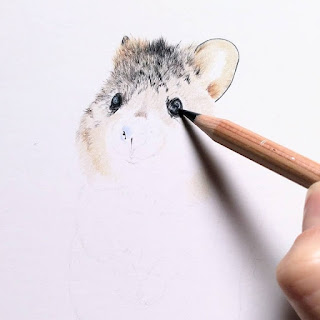Indie artists who post online rarely get credit or compensation. Instead, they are at risk for online art theft and unauthorized commercial use by others of artist-owned IP (intellectual property).
It's time for followers to wake up. If we "like" and "share" and want more -- we need to get educated. The internet platforms (Facebook; Instagram; etc) should be taking better care of the indie artists who make them successful!
Instead, it's up to fans to get involved. If we want more art and content -- we need to participate. Support indie artists. Buy directly from them. Make sure their art gets credited. Report theft and counterfeit products using artist-owned images.
For indie artists -- look for ways to engage your followers. If you have an online following, you are providing value. You have earned credit and compensation. It's your hard work that creates the "free" content followers value.
Write posts that invite your followers to become sponsors. Look into funding services like Patreon, Ko-fi; PayPal; and online stores like Etsy and Red Bubble.
How can artists and followers connect the dots between enjoying content and respecting the value artists provide?
If you are an artist posting images online, help your art work for you. Your creative process is worth documenting. Your skills shared online help educate fans and followers -- turning them into collectors and sponsors.
Here's a great example of using work-in-progress (WIP) posts to share step by step instructions -- engaging fans -- and making an impression about content, value, and participation. Process posts like these help visualize all the work and skill that goes into "free" content.
Artist Catherine Scartaccini, also known as CS Illustrator, is a scientific illustrator based in Australia. (photo by Sev)
Below is a photo of her from the Fremantle Markets website (photo by Jeffreys photography)
Catherine is active on Facebook and Instagram, where she shares amazing posts like these.
--------------------------------------------------------------
This giraffe series combines science and art lessons:
"I'm so excited to start filling out my collection of African animals! I've had frequent requests for several of the popular species, and I'm starting it off with this unmistakable character
The giraffe's patchy coat means I have to change my approach to rendering his fur. Usually when I work with 'patches' of colour, it's related to the shadows and highlights, so the 'patches' have three-dimensional meaning. I'm thinking about the curve of the underbelly, or a defined jawline, or where a boney joint pokes out, when working this way. The giraffe's patches, though, are two-dimensional in that their borders are independent of the shadows and highlights covering the giraffe's pelt as a whole. A shadow can cover multiple patches as well as the pale fur between them. I have drawn a giraffe before when I was a young teen, in graphite, and back then I found the best approach was to fill in each patch individually, before filling in the spaces between them and 'joining up' the shadows and highlights later.
The giraffe has very thin fur, being a creature from such a hot environment. The wrinkles and ripples in his skin are clearly visible and produce creases that sometimes break up his brown patches. I must pay attention to my reference for these places in order to render it convincingly.
Here you can see my base layer for many of the patches. Working on a coat as complex as this easily gets overwhelming, so I opted to take a break from the intricate shading and just map things out for a while.
The giraffe's famous neck is a contentious topic amongst evolutionary biologists: whether it evolved via natural selection to take advantage of tall foliage, or via sexual selection as a means of competition between males, isn't clear. The truth is likely that both of these factors had a role to play, possibly in addition to others that we haven't discovered yet. Nature isn't known for being straightforward, after all!
"Special thanks to @alex.ander1286 for the gorgeous reference photo! 😄
The quokka's might be the tourism star of Rottnest Island, but that's not the only place you can find them - though it's certainly the place where they're the friendliest! Small populations of these little wallabies also exist on Bald Island, and scattered in the forest and coastal heath between Perth and Albany. Quokkas from these latter places won't come up to you begging for treats, though; they are shy animals which haven't been acclimatised to human interaction.
Big eyes, upturned face ... Who could this be? (6/9)
I felt that my last quokka was undersaturated and low-contrast, and on this one I'm focusing on getting my darks where they need to be, and sneaking in those pops of colour into the fur (6/10)
The quokka's big feet and hopping gait reflect its membership in the macropod family of marsupials, making it a relative of the iconic kangaroo. In fact, the quokka is itself a species of wallaby! (6/11)
The hard Polychromos are great for detail, but they are also extremely responsive to the weight of your hand. With a light touch, you can lay down colour that is just barely visible. The soft Luminance, on the other hand, tend to put down much more saturated layers with the same weight-of-hand. So if I want something definitely dark - like the guard hairs on this quokka's coat - it's more efficient for me to use the Luminance than the Polychromos, provided the colour is right. (6/12)
Faber Castell Polychromos, Derwent Drawing, and Caran d'Ache Luminance coloured pencils on 5×7" Art Spectrum 210gsm smooth draw and wash paper."
Here are contact links for Catherine from the "about" page of her Facebook:



















No comments:
Post a Comment